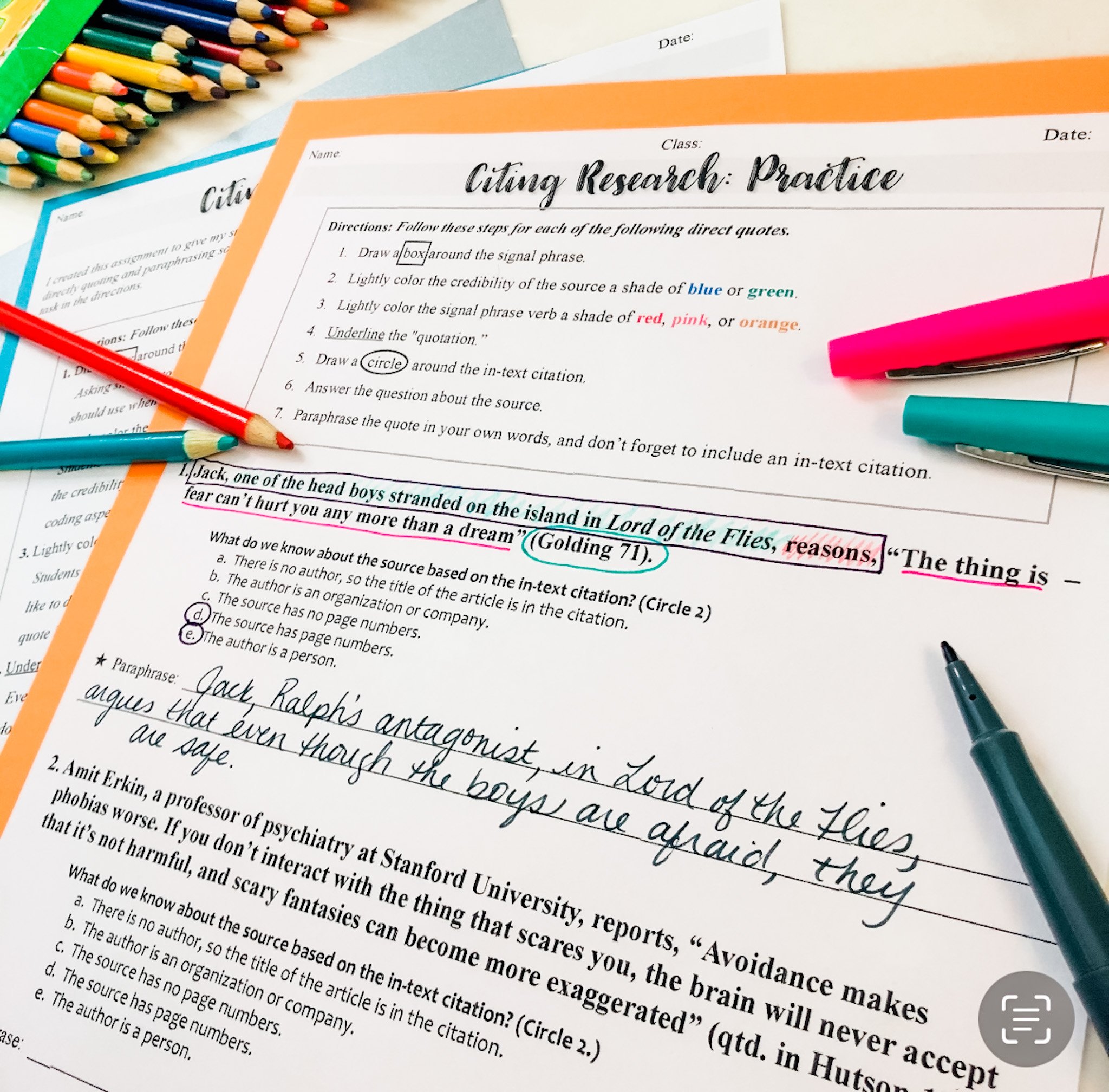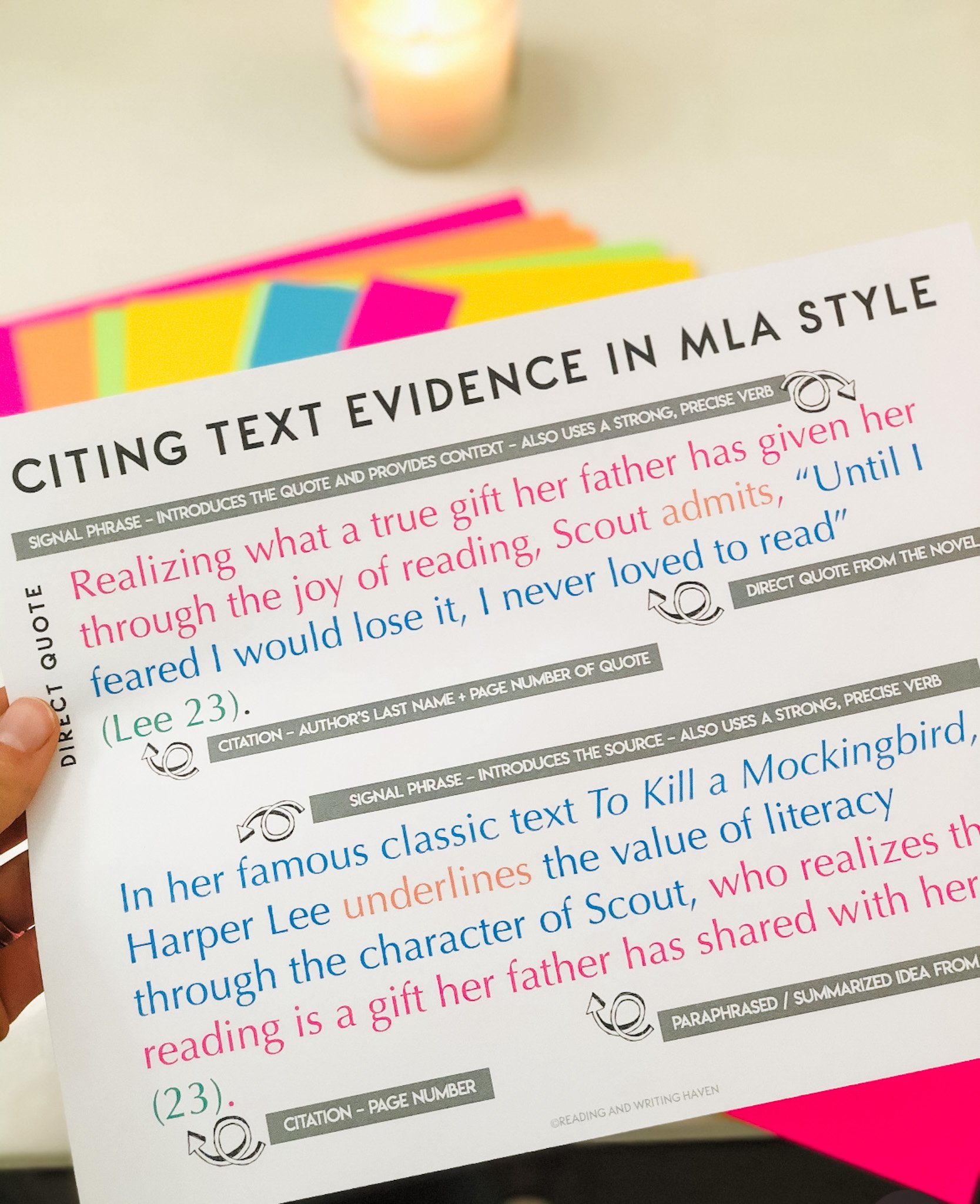Avoiding Plagiarism - 6 Effective Teaching Strategies All Educators Need
Assessing essays takes time. Nothing is more irritating than finding plagiarism in final drafts. You taught the material. You were thorough and clear. You stated your expectations. How could your students be so lazy...or were they? Over the years, I've learned that avoiding plagiarism is a difficult concept for teenagers to grasp. What seems like a black and white idea to adults can be more of a gray fuzzy area for students. Often times, their errors are not intentional.
The way I approach plagiarism instruction varies depending on students' writing knowledge. Differentiating your instruction can help to alleviate the stress and time involved with grading plagiarized essays. Plagiarism should have a penalty, but before teachers enforce consequences, we need to know we've made every effort to lead students to success.
AVOIDING PLAGIARISM: TEACHING APPROACHES
1. Begin your research unit with direct instruction.
Make sure students can define and identify plagiarism, know that it's more than copy and paste, and understand that it has consequences in real life - not just in school. I begin every research unit with a plagiarism mini unit. During this week, I share real-world plagiarism examples, introduce students to the basic ways they can avoid plagiarism, and help them grasp the concept via different exercises and learning opportunities. Students need to hear the information verbally, to see examples, to practice with exercises and games, and to correct common mistakes.
In the way of direct instruction, I also like to teach my students (as a review or new concept, depending on the grade) how to cite direct quotes in MLA format.
After direct instruction, it’s really important that students have structured time in class to practice citing research. That practice can come in many forms! Tips 2 through 6 provide my favorite ways to use class time for avoiding plagiarism.
2. Lead students through practice exercises.
Effective practice exercises for avoiding plagiarism should cover paraphrasing, summarizing, and directly quoting sources. For example, I give my students practice scenarios like these:
You are writing an informative research paper about dolphins. While researching, you come across the following interesting fact. It is worded very well, and it also includes technical jargon. You are not sure how to put it in your own words, and it is not very long, so you choose to directly quote it.
Passage – Echolocation is a term for the precise system wherein dolphins use sonar, or sound waves, to detect objects in the darkness of their underwater world.
Source – Scholastic Scope magazine
Title of Article – “Hunted for Fun, Left to Die”
Author – Lauren Tarshis
Page # – 7
Date – February 11, 2013
We work through several examples together, and then I have them pair up to practice with a partner. We always discuss the answers as a class because mistakes provide valuable teachable moments for all. These practice exercises provide the type of mental preparation professional athletes use before games! They help us to get into the “writing zone.”
3. Use model essays.
Each time I assign an essay, I give students models of that type of paper. One of the samples is missing important citations, quotation marks, or a Works Cited page. It's always an eye opener for them after they read a well-written essay and I ask, "What grade do you think this paper is worth?"
Almost always, they reply that it should be an A. When I tell them the individual would actually earn an F for omitting citations or a Works Cited page when writing a research paper, they start to realize the implications for inattention.
The same conversation holds true in a standards grading system. How can we say students are proficient with citing research if they do not demonstrate their ability to do so?
After that, I have many more students being diligent about trying to cite their sources correctly.
4. Give students many opportunities to receive feedback.
When my students are in the middle of writing an essay, I'm constantly circulating the room, looking over shoulders, conferencing with them, or stalking their documents on Google Drive. While it's time-consuming in the moment, it saves me time in the long run by reducing the number of errors and issues I have to address on the final draft.
If you’d like a quick way to track these in-the-moment conversations you have with students about plagiarism, try a simple checklist. Put students’ names in the left column and #s on the top row. Each time you have a conversation with a student about plagiarism, write the date in the first open column next to their name. This spreadsheet idea is a tangible way for both teacher and students to ground conversations about the intentionality of plagiarism in a final draft.
5. Complete Works Cited pages during the prewriting stage.
Require your students to complete their Works Cited page as they find their sources. This way, they don't forget where they found the information they plug into their essay. I always tell students it's easier to delete a source they didn't cite than to find one they forgot to record.
What does this look like in practice? As students open a document to begin their essay, I also have them open a separate tab with a Works Cited draft. (They can also insert a page break in Google Docs and keep their Works Cited at the bottom of the essay.) Then, as I model the writing process, I also model how every time I use information from research, I add that source to my Works Cited page, and I include an in-text citation after the ideas from research before moving on.
6. Allow students to revise and edit specifically for plagiarism.
Before collecting a rough or final draft of an essay that you plan to grade, allow students to complete stoplight plagiarism stations. The benefit is that you are not parroting what you've already taught them. Station activities put students in the driver's seat, and when students do the work, students do the learning. If they care, they will ask questions, revise, and edit their work so that it is better as a result of the activities. In turn, you'll spend less time marking errors unnecessarily.
These tips will help with any student...but struggling writers? They need more. Hop over to Reading and Writing Haven to read about how you can support struggling writers so that they, too, understand the concept of plagiarism.
In our digital world, it can be difficult to convince students that plagiarism is a problem. It's necessary that teachers do what we can to battle complacency and teach middle and high school students about ethical writing practices. No one likes to have their hard work and ideas stolen. Students can understand that and begin to master the process of citing research correctly if we scaffold our instruction to meet them where they are.
Download a free direct quote practice activity and an MLA REFERENCE PAGE FOR CITING TEXT EVIDENCE to use with your students today!
RELATED RESOURCE:
ABOUT THE AUTHOR:
Melissa is the creator of The Reading and Writing Haven and a collaborative blogger on Teachwriting.org.
An English teacher for over a decade, Melissa is an avid reader and writer, and she loves sharing ideas and collaborating with fellow educators. Melissa use her degrees in English, Curriculum & Instruction, and Reading as well as her Reading Specialist certification to ponder today’s educational issues while developing resources to help teachers, students, and parents make learning more relevant, meaningful, and engaging.
When she's not teaching, Melissa lives for drinking a good cup of coffee, loving on her family, working out, and contemplating the structure of a sentence as well as how she can lead her students to deeper reading comprehension (Melissa's true nerdy passions).
Visit Melissa on Instagram, Facebook, or Twitter for English teacher camaraderie and practical, engaging teaching ideas.








